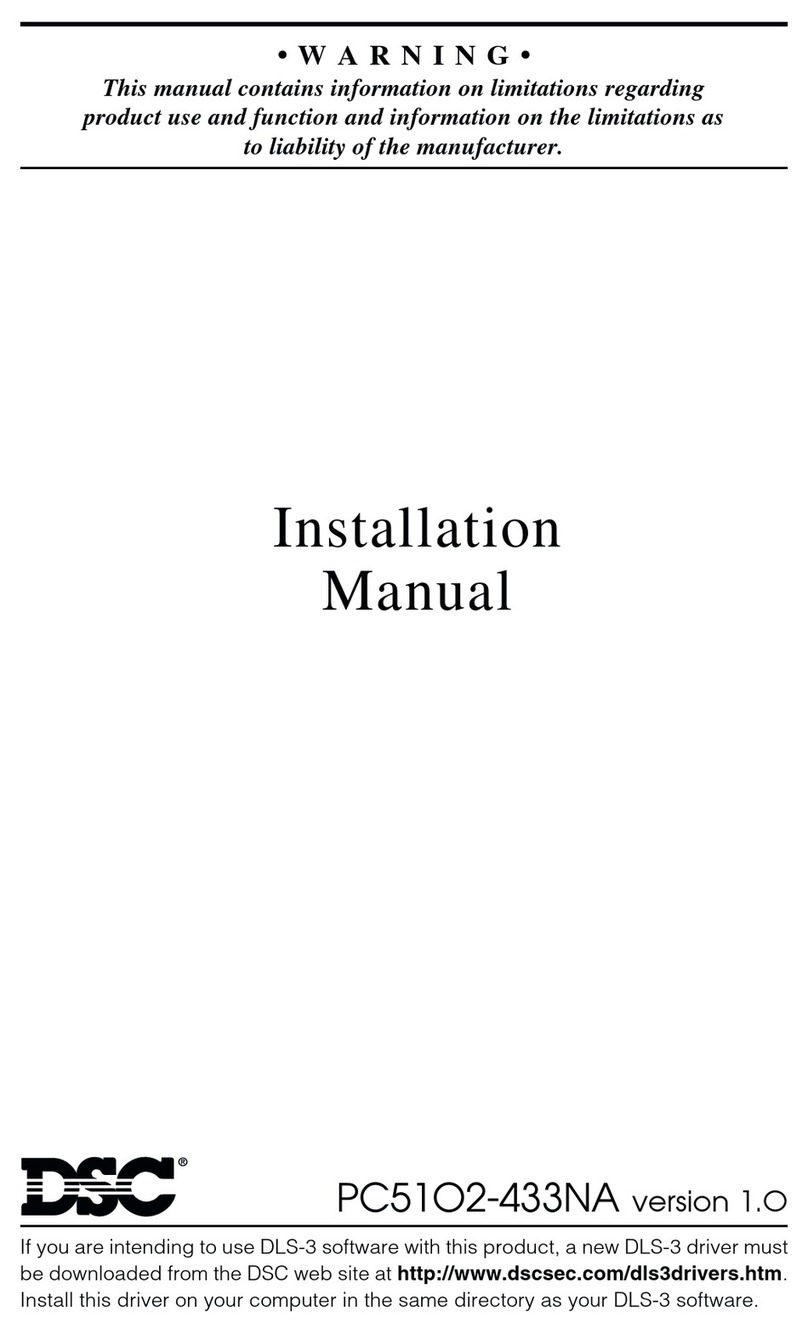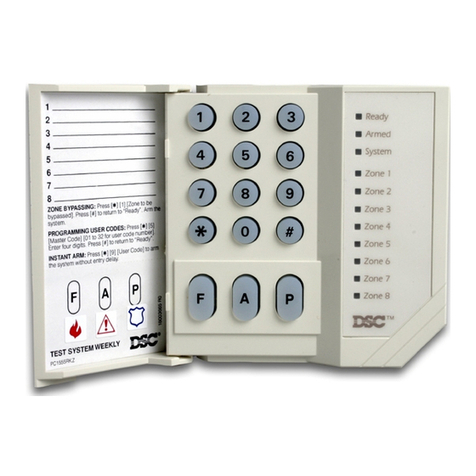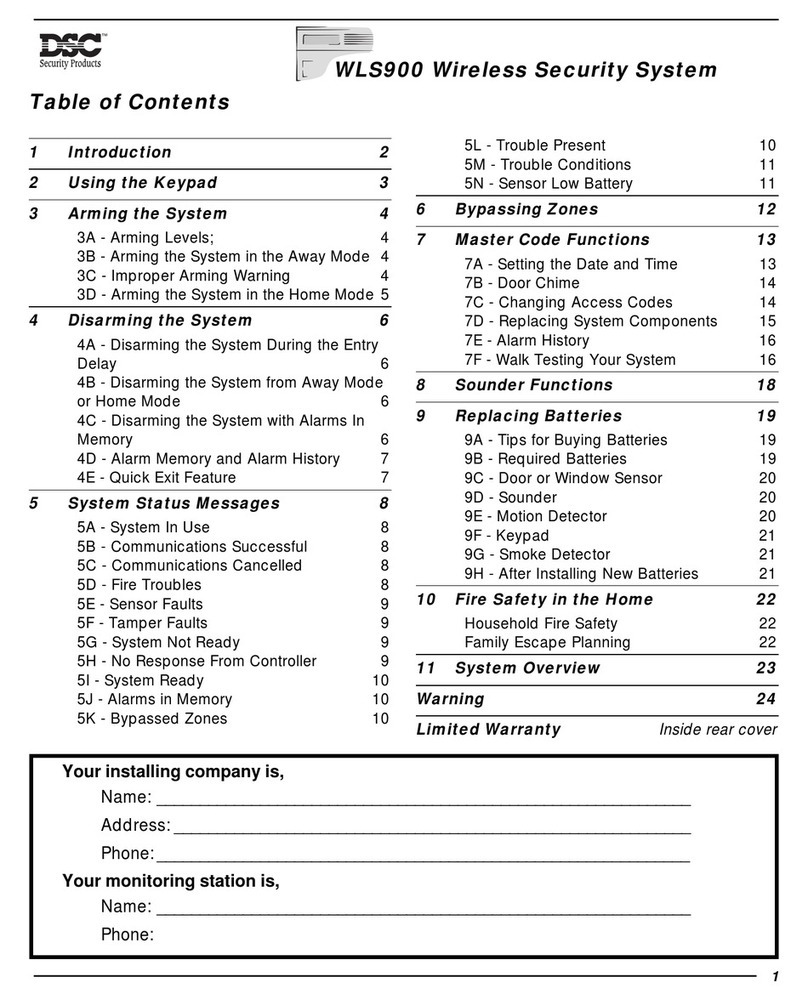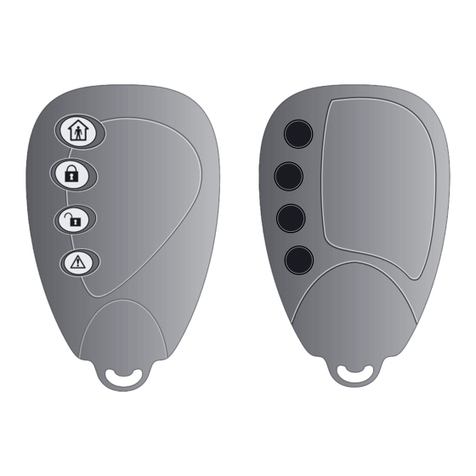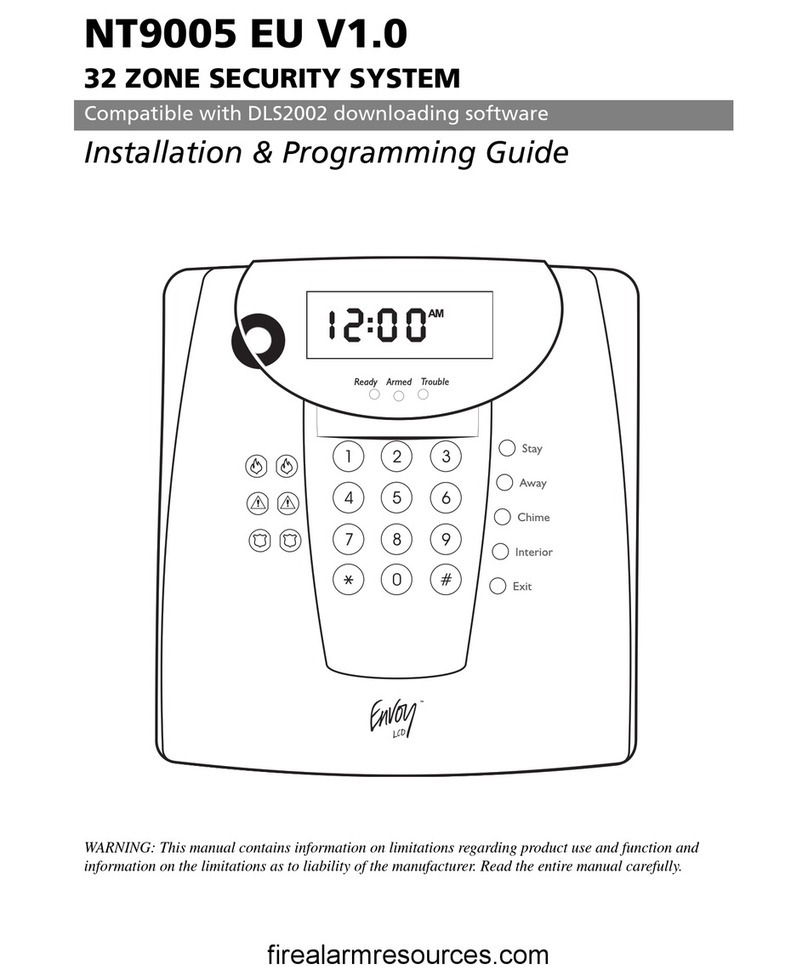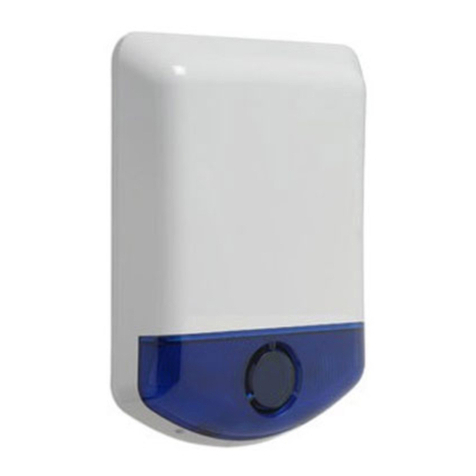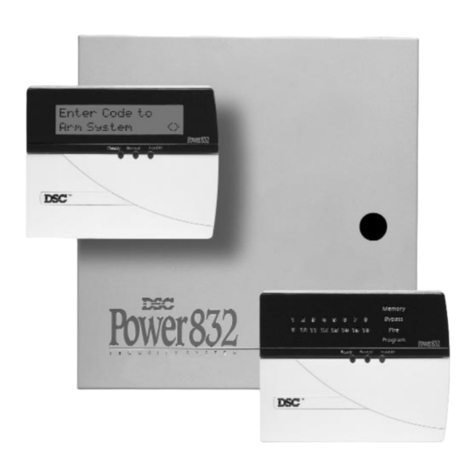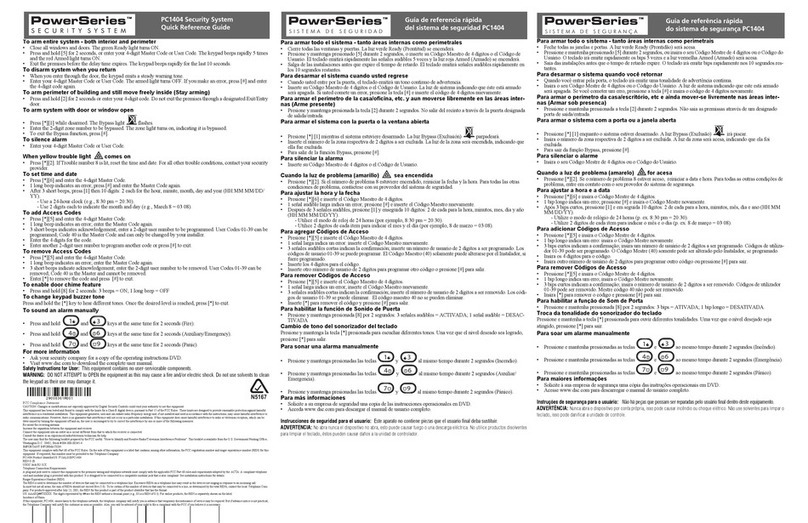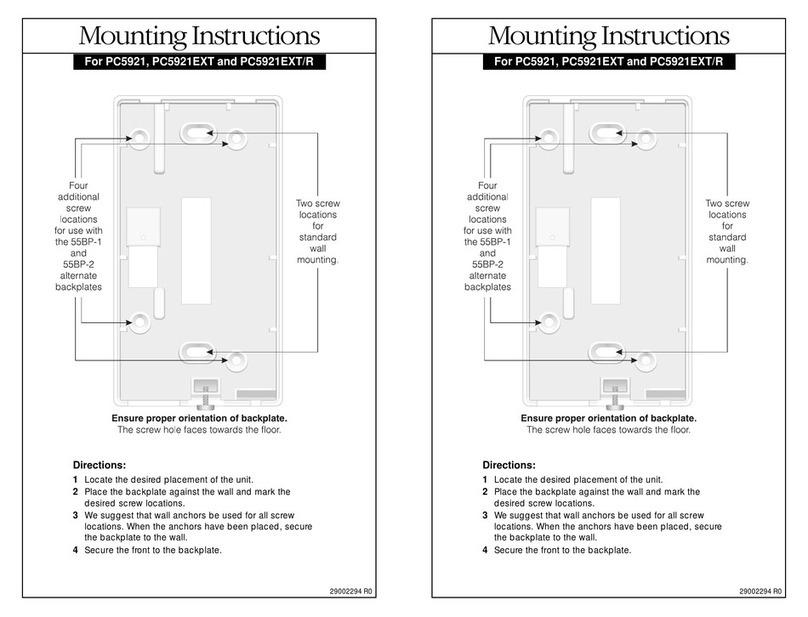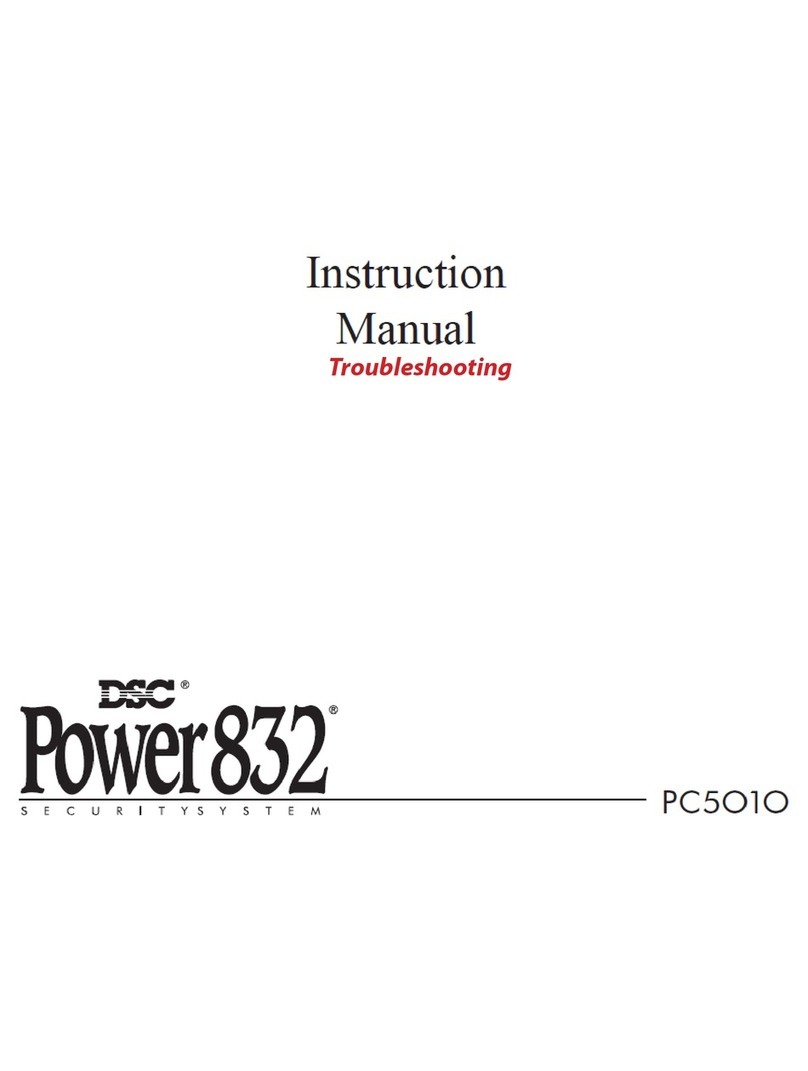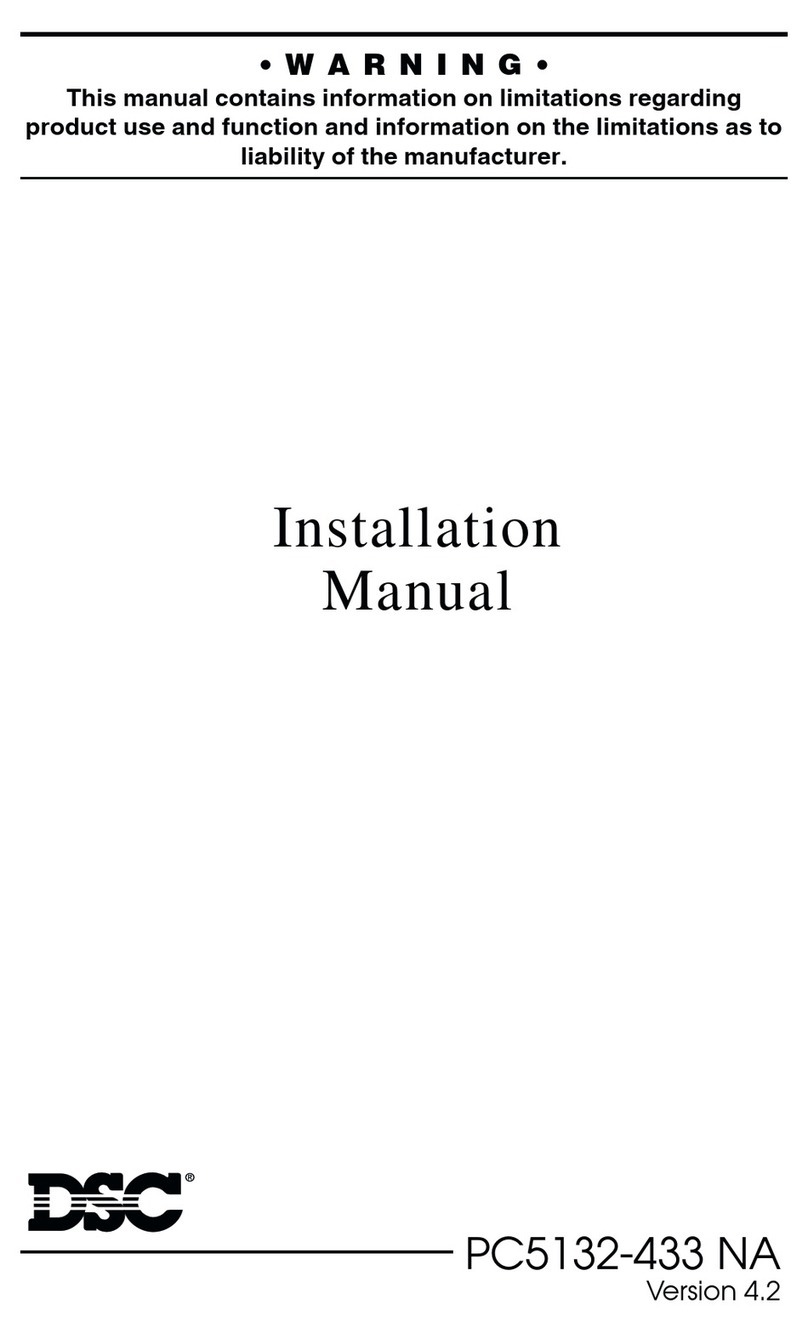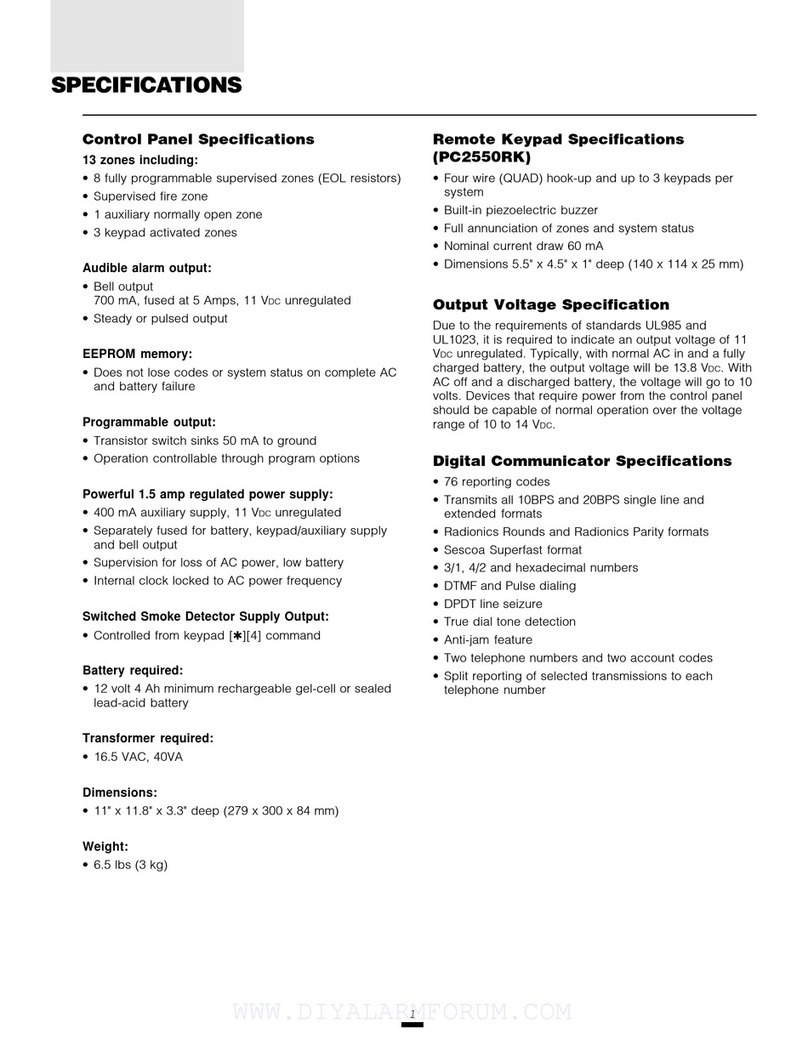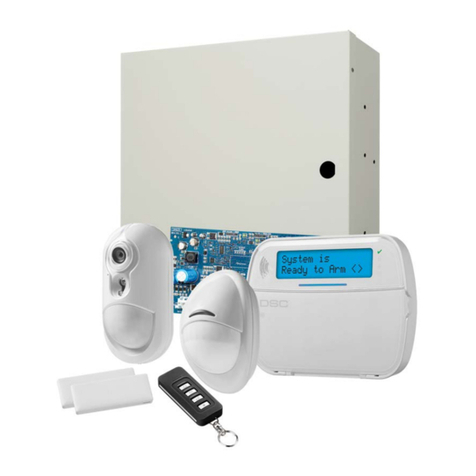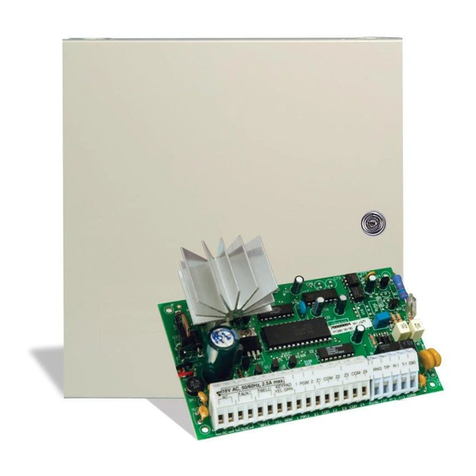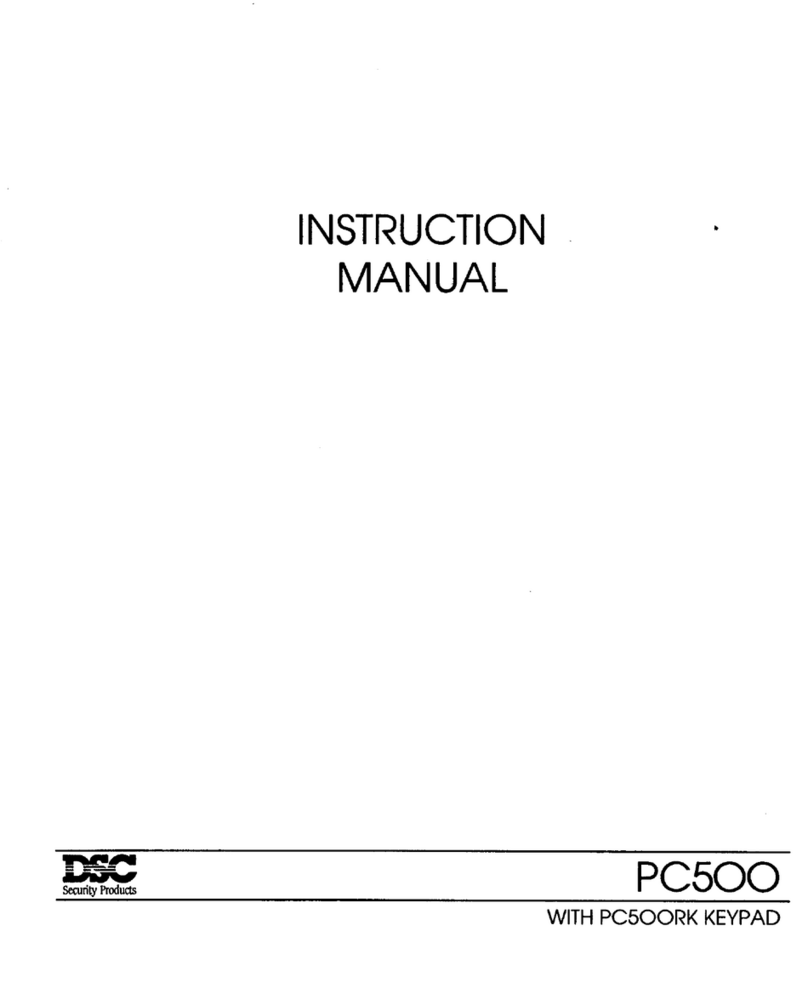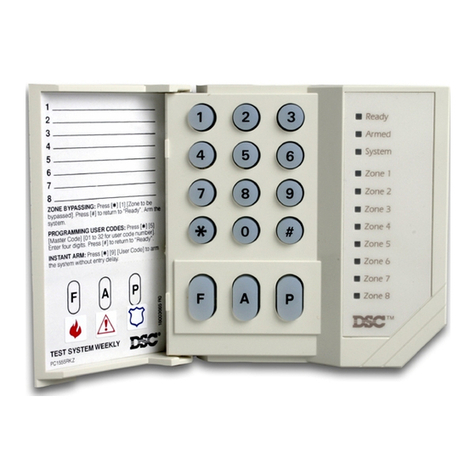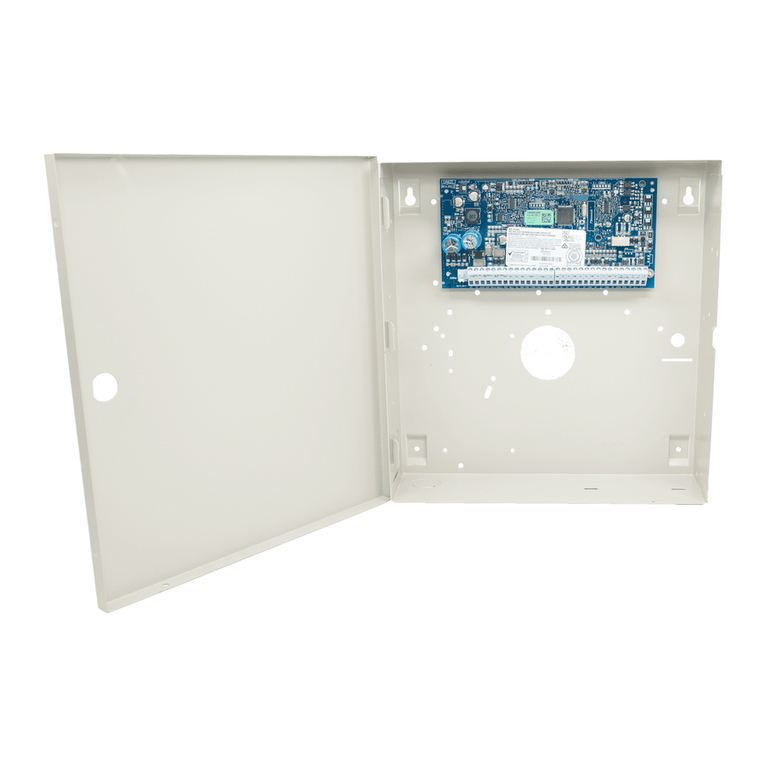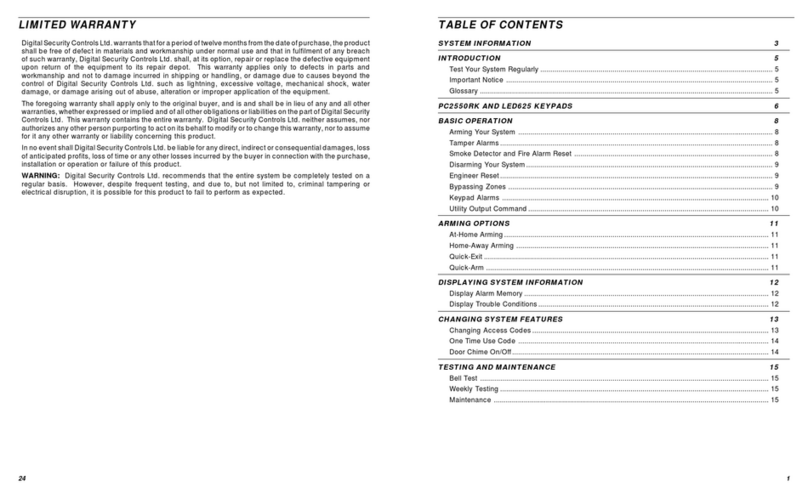
PC1404 Programming Descriptions
3
[08] Standard 24-hr Fire Zone (hardwired)
Note: Do not wire Fire zones on keypad zone terminals if the DEOL supervision option is enabled for the panel (Section [013], Option [2]).
This zone type requires a SEOL resistor, and it cannot be reconfigured using the NC, EOL or DEOL options in the panel. The alarm
state is short, the restored state is 5k6, and an open condition will generate a zone tamper and fire trouble. When violated, the bell output
will sound a pulsing alarm tone to indicate that the fire loop has been activated. If enabled, the communicator will immediately send an
alarm to the central station.The alarm will sound until the Bell Cutoff time expires (Section [005] “System Times”), or until a code is
entered. A violated Fire zone will be displayed on all keypads. Typically this zone is used for pull stations.
[09] 24-hr Supervisory Zone
This zone type requires a SEOL resistor, and it cannot be reconfigured using the NC, EOL or DEOL options in the panel. The restored
state of this zone is 5.6k, the alarm state is short and the tamper state is open. This zone does not cause the bell to activate, but will be
displayed in alarm memory regardless of the armed state of the panel. If this zone is violated when the system is either armed or dis-
armed, the panel will report to the central station, and will log the zone alarm to the event buffer. This zone gives a silent alarm by
default.
Note: Do not wire 24-hr Supervisory zones on keypad zone terminals.
[10] 24-hr Supervisory Buzzer Zone
If this zone is violated when the system is either armed or disarmed, the panel will immediately latch the keypad buzzer until a valid
access code is entered and will immediately communicate to the central station.
[11] 24-hr Burglary Zone
If this zone is violated when the system is either armed or disarmed, the panel will immediately latch the alarm output and communicate
to the central station. The alarm will sound until the Bell Cutoff time expires (Section [005] “System Times”), or until a code is entered.
[12] Not Used
[13] 24 Hr. Gas
This zone type is active at all times, regardless of the armed state, and when tripped will generate an audible, pulsing alarm. This zone
type is typically used with CO detectors or for monitoring gas lines.
[14] 24 Hr. Heat
This zone type is active at all times, regardless of the armed state, and when tripped will generate an audible, steady alarm. This zone
type is typically used with heat detectors.
[15] 24 Hr. Medical
This zone type is active at all times, regardless of the armed state, and when tripped will generate an audible, steady alarm. This zone
type is typically used for medical emergency pull stations.
[16] 24 Hr. Panic
This zone type is active at all times, regardless of the armed state, and when tripped will generate an audible, steady alarm. This zone
type is typically used with panic pendants.
[17] 24 Hr. Emergency
This zone type is active at all times, regardless of the armed state, and when tripped will generate an audible, steady alarm. This zone
type is typically used for non-medical emergency situations.
[18] Not Used
[19] 24 Hr. Water
This zone type is active at all times, regardless of the armed state, and when tripped will generate an audible, steady alarm. This zone
type is typically used for monitoring flood conditions.
[20] 24 Hr. Freeze
This zone type is active at all times, regardless of the armed state, and when tripped will generate an audible, steady alarm. This zone
type is typically used in applications that monitor low temperatures.
[21] 24-hr Latching Tamper
This zone type, when violated, will cause arming of the system to be inhibited until the installer accesses Installer Programming or the
condition has been reset using DLS. This zone type is normally used for monitoring the panel's cabinet. If the cabinet has been opened,
someone may have tampered with the system's wiring, so this zone type is used to generate an installer service call. This zone type gen-
erates an audible, steady alarm in both armed and disarmed states.
[22] Momentary Keyswitch Arm Zone
A keyswitch device (mechanical switch controlled by a key) may be connected to the zone input programmed as momentary keyswitch.
Momentary activation (open and close) of the zone alternately arms/disarms the system and silences alarms. Tampers and faults will
only initiate their respective trouble sequence. The keypad will not display an indication when this type of zone is activated. When an
audible alarm is active, using the keyswitch when disarmed is the same as entering an access code at the keypad. The system will log
special closing or special opening if the keyswitch is used for arming/disarming. If a keyswitch device is bypassed, the bypass must be
manually removed.
[23] Maintained Keyswitch Arm Zone (Hardwired)
A keyswitch device (mechanical switch controlled by a key) may be connected to the zone input programmed as maintained keyswitch.
In the restored state, the system is disarmed. In the violated state, the panel will arm. Tampers and faults will only initiate their respec-
tive trouble sequence. The keypad will not display an indication when this type of zone is activated. If the system is armed using this
zone (violated), but the system is disarmed using a different method, the keyswitch must be restored and violated again to start a new
arming sequence. The same is true for disarming.
A bypass of this zone type must be manually removed.












